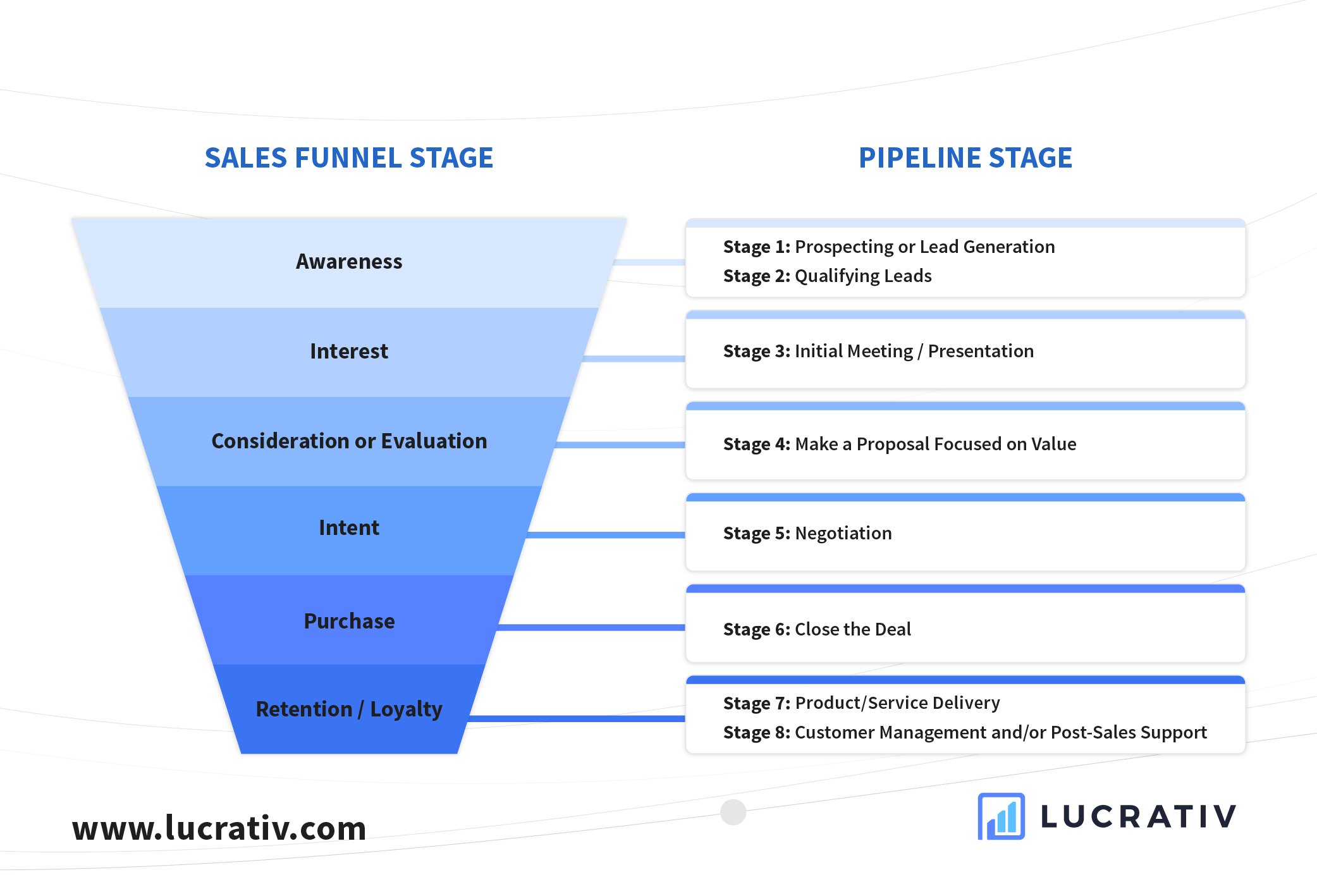
As sales professionals, you’ve been trained to sell, sell, sell. But how many really stop and think about how the buyers process your sales spiels?
Buyers go through a journey, and each step takes a prospect closer to buying your product/service… or not. This is what your sales funnel ultimately tells you, and your sales pipeline should align with it.
So if you are going to plan a sequence of strategies to convert a prospect into a buyer (your sales pipeline), then you have to really understand the sales funnel and know what to do in each stage.
1. Funnel: Awareness
As the name suggests, this is when your prospect is made aware of your product/service and you. Maybe they heard about you from an ad campaign, a social media post, a referral (always a good thing), or on Google. Or maybe you took the initiative and cold-called them.
Pipeline: Prospecting or Lead Generation and Qualifying Leads
So you’ve generated enough leads, but you need to vet them all. In qualifying leads, you normally determine the size of the prospect’s company, the point of contact’s decision-making power, their level of interest/engagement, or the project size, scope, and budget. Higher SQLs help speed up the selling process and have more potential for revenue, so qualifying leads is paramount.
2. Funnel: Interest
So a prospect has really shown interest: they are curious to know about you, your company, your product/service, and most especially, what benefits they can gain from engaging your company.
Pipeline: Initial Meeting / Presentation
You’ve got one foot in the door, now it’s time a make a good impression. Usual pleasantries are exchanged and you share all the information critical to making a sale. But at the core of all these interactions should be the message of value—that is, the value you will provide to your prospect. How will you solve you prospect’s problem or need?
3. Consideration or Evaluation
Your prospect is considering you, but they are also considering others. They are looking at other options and evaluating everything, and comparing your proposal to others’.
Pipeline: Proposal
The value we spoke of in the Interest / Initial Meeting stage should be clearly outlined in your proposal. A client can see through a generic/template proposal, so make sure yours is tailored to your prospect’s concerns and needs.

4. Intent
Your prospect has expressed intent to engage you and your company for your product/service, but there are still some factors that need to be ironed out. These factors could include price or budget, deliverables, timeline, and the like.
Pipeline: Negotiation
This is where your negotiations skills are tested and first thing you should do is really listen to what your client demands. Empathize, ask good questions, and be honest. People like to negotiate with people who show a genuine interest in finding middle ground—and make sure to find middle ground you’re happy with. At the end of the day, the sale should still be profitable. Always remember: you sell first and negotiate second, but when the need to negotiate happens, you can try these.
After the back and forth, you submit your final proposal. Your prospect will do his final evaluation.
PS. We have tips on closing deals here and here.
5. Purchase
The prospect has decided to engage you and your company for your product/service. Congratulations, you closed the deal!
Pipeline: Closing the Deal
Have all the necessary paperwork signed, sealed, and delivered, so to speak. But do note: what sales people often forget is that when a prospect goes with their proposal, the relationship doesn’t end there. It actually only really begins then. Your prospect also technically engaged you. So after closing a deal, make sure to show your gratitude and stay focused on what you promised your now-client. You can also use this opportunity to upsell—but do so thoughtfully. You can also ask for referrals at this stage.
6. Retention / Loyalty
Make sure that you gain your client’s loyalty. Why? Because retaining customers is profitable.
Pipeline: Product/Service Delivery and Customer Management and/or Post-Sales Support
Just how do you retain customers? Deliver on all your promises—even exceed expectations. Go the extra mile in making sure your client is satisfied—satisfied enough to keep engaging your services and referring you to their network. Attempt to get honest feedback every now and then. Be accessible, respond in a timely manner, admit to mistakes when they happen, and always listen to your client.
Photo by YIFEI CHEN on Unsplash




